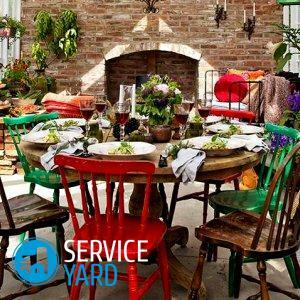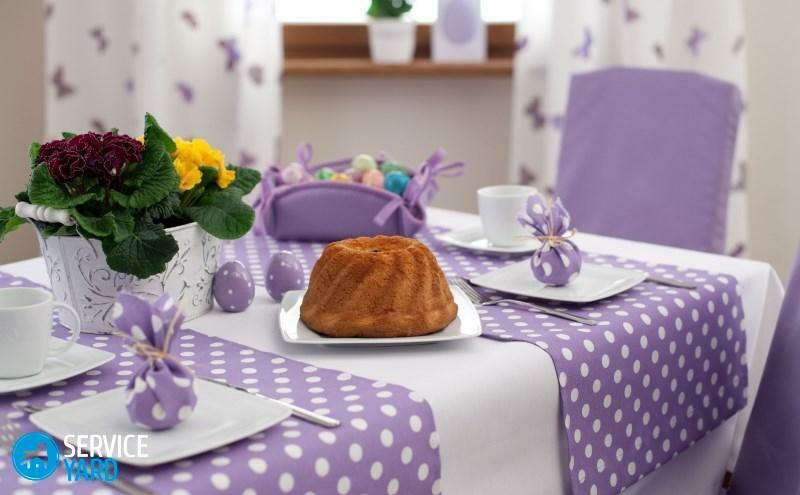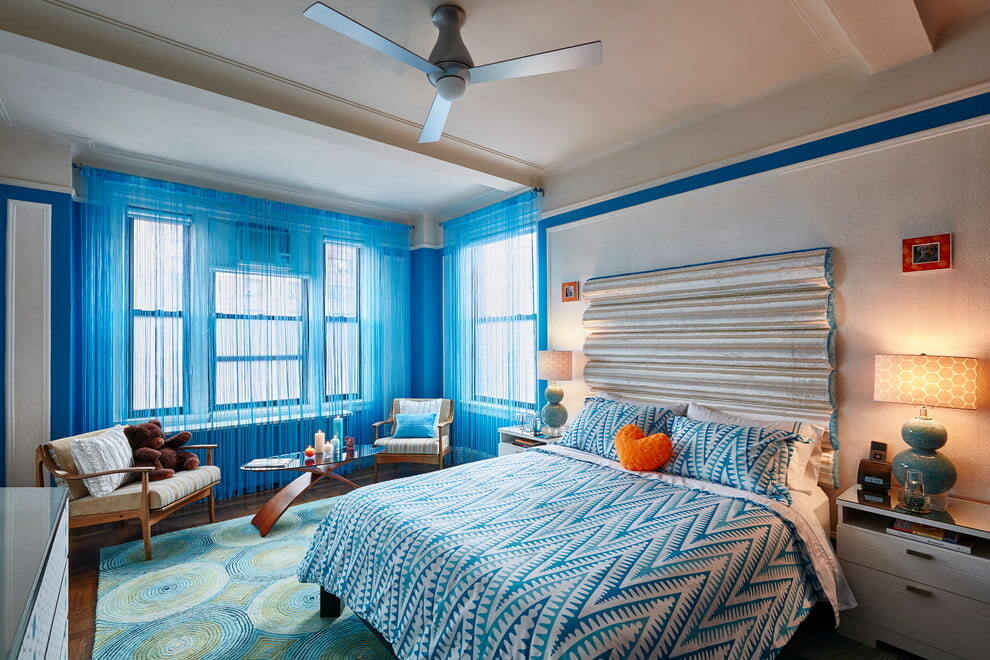
- What can be "runners"?
- Do all tracks fit the tracks?
- We make a laced path on the table with our own hands made of natural fabric
- Tablecloth cloth with lace
- Slider of flaps
- How to lay the path on the table correctly?
The path( runner, runner) is a piece of fabric decorated with lace, embroidery, applique, fringe and other decor, which is half already narrower than the table and usually hangs slightly at the edges. The owners of needlewomen can literally have a couple of tablecloths, but there are many paths lovingly created for different occasions of a family feast: by New Year, Christmas, Easter, by birthday, wedding anniversary, for children's parties and just for Sunday family dinner.
The path to the table with your own hands is creative, fast and inexpensive. This - on the one hand, the decoration and flavor of the table, and on the other - the protection of the tablecloth from the contamination. We will talk about how to create similar products on our own in this article.
to the contents ↑What can be "runners"?
- The simplest version of this desktop decor is a long strip of fabric, laced around the perimeter.
- This can be detached, decorated with a past or a Richelieu. You can tie the main part around the edges with a crochet, that is, create a knitted lace. And you can even crochet the entire runner. Such tracks are a sample of simple chic.
- If you masterfully master the sewing skills on the typewriter, you can sew the tracks on the table with your own hands in the style of "patchwork"( patchwork sewing).After all, always in the house is full of different cloth scraps, which can be put into the work and create the original thing.
- You can decorate the path with appliqués on different subjects: flowers, peas, geometric patterns and so on. For example, by the New Year it will be actual to sew a slider with appliqués in the form of New Year's balls, crackers, fir-trees. By Easter - in the form of Easter cakes, baskets with colorful eggs, rabbits.
- If you know how to embroider a cross, then you can decorate the path with all sorts of motives to your taste - at the edges, or - on the contrary, in the center.
- If you are not very fond of sewing and embroidering, but deep down inside you have a hidden artist, you can draw everything you want on the cut.
Important! For such actions there are special markers and paints. You can even draw "whiteness" on a dark fabric.
- There are no restrictions on the basis of fabric either. It can be cotton, linen, polyester, burlap, felt.
Important! Some make even disposable sliders from paper or cardboard squares, circles, fastened together in strips with a stapler or glue gun.
Color palette
In the color scheme, you also can not limit yourself:
- Usually for everyday use sewing tracks of calm colors.
- For children's and New Year's holidays - riot of colors is permissible.
- For gatherings with guests you need to know some tricks:
- bright warm shades - red, orange, yellow, excite appetite, revive the mood, activate.
- but the cold tones - blue, lilac, blue, on the contrary, reduce the appetite, soothe.
- For a secular dinner, one-color sliders are appropriate, which should be combined with the interior, tablecloth and even with utensils.
Do all tracks fit the tracks?
Of course, the taste of all people is different, and no one can tell anyone how to decorate his house. As the saying goes: "I'm an artist, I see it!".But there are certain generally accepted design rules. What do they dictate to us about the conformity of the tablecloth and the track with the shape of the table?
- For rectangular table, which is practically in every house, of course, a rectangular tablecloth is suitable. It should cover the entire surface and hang on the edges 20-30 cm. In this case, the track will be more than appropriate. She will protect from stains the basic tablecloth, will give her an individuality and charm.
- Square tables are suitable mainly for square tablecloths. An interesting option would be to lay two square tablecloths on top of each other crosswise. In this case, their colors should be harmoniously combined. The tracks in this case will not be a very suitable option.
- Round tables are suitable for both square tablecloths and round ones, they can even be combined: lay a round tablecloth over a square tablecloth, of course, provided that the square is clearly visible from under the round and their colors will be combined. For this form of the table, the tracks also do not quite fit.
We make a laced path on the table with our own hands made of natural fabric
It's quite easy to make tracks on the table with your own hands. For example, take a simple slider made of natural cloth, decorated with lace.
Materials and tools:
- A cut of cotton fabric of the right size and the right color( usually 120x40 cm).
- Lace of suitable color, can be white or cream( 3,5 m will be with a margin for the track of the above size).
- Sewing threads( match the color of the fabric).
- Tailor's tailor( you can thin the remnant) for markings.
- Sewing pins.
Calculating the size of the slider
The above is the size of the fabric and lace for the standard table. But you can have other options. Therefore, before starting to work, you need to determine the size of the finished product and the parameters of the required working cut.
Procedure:
- First, measure your desk.
- The width of the slider should be no more than half the width of the table itself. And the length should be equal to the length of the table plus 20-30 cm, because the path should hang around the edges.
- Hanging edges should not extend beyond the tablecloth and should not interfere with seated people. This applies to the tablecloth.
- If you doubt how long it should be longer than the table, take it, put a chair and look: the maximum length should be a couple of centimeters above the seat, otherwise it will interfere.
Important! Some like tablecloths on the floor, but they are more appropriate for buffets, when guests move around the room, drinking drinks and snacks standing up.
Sequence of sewing:
- Using a chalk and ruler, make a marking and cut a piece of cloth of the right size, remembering to add a couple of centimeters of the allowance for the hem.
- With a chalk mark, by what line will you bend the edges along which you plan to sew lace.
Important! Some masters for clear marking simply pull the thread from the fabric. Such a mark is not accidentally erased and will be more even than under the ruler.
- For processing the edge of the track, it is better to use a double fold. Then the fabric will not be strewed, and the untreated edge will hide in the crease. When you bend 1-1,5 cm, fasten immediately with pins( you can use a notch).Once fixed - walk along the edge of the iron.
Important! A pressed fold is much easier to stitch on a typewriter.
- After you have bent and stitched once, bend the edge again, but 1-2 cm more, also zakolite, iron and stitch the seam.
- When the edges are ready, proceed to sewing lace. On the marked line, fix the lace with the marking, and afterwards sew on the sewing machine with a "zigzag" line.
Important! The lace itself is preferably pre-washed and ironed, otherwise - at the first wash it can sit down and pull the fabric off. At the same time, you can press on the underside of the allowances from the fabric, if they are on the lace.
- If you do not have a sewing machine, but you really want to have a lace path, buy a fabric that does not crumple, cut out a rectangle of the right size from it, and attach the lace to the edge of the fabric along the intended line with an adhesive gun.
Basscloth tablecloth with lace
Creating this track also does not take much time and does not require a lot of money.
Materials and tools:
- Sacking.
- Linen or cotton lace.
- Threads per tone.
- Scissors for tailoring.
Important! To ensure that such a slider looked dignified, the lace must necessarily be made of natural thread, white or milky. If you have white laces, but would like to give them a shade - you can paint them with a decoction of black tea.

Sequence of sewing:
- To begin with, determine the desired length and width of the track, based on the size of your table( as it is correct to do - see above).
- The length of the lace will be calculated as follows: three track lengths + two track widths + lace width( central insert) + margins for corners.
- Cut out the desired piece from the burlap.
Important! It is advisable to use tailor's scissors, as the fabric is dense, and simple scissors will not cut smoothly.
- Cut this piece lengthwise into two equal parts.
- The edges are processed on an overlock or zigzag.
Important! Overlock for this type of fabric is preferable.
- Now with a slight overlap( about 1 cm), apply a lace, sweep it with a thread to one half of the path, and then sew on the machine.
- Likewise sew this lace to the second part.
- Along the perimeter of the finish, fix the trim, starting from the corner and moving along the entire path.
- In the corners make a crease so that the lace does not wrapped down.
- It remains to sew it on the machine and everything is ready.
- Now, iron it thoroughly.
As you can see, the path to the table with your own hands is very simple.
to content ↑Slider from rags
If you have good sewing skills, you can give a second life to the remains of cloth or old clothes that you no longer wear, creating the necessary thing in the household.
Materials and tools:
- Scraps of fabric of different colors, but of equal thickness and texture.
- Threads.
- Scissors.
- Sewing machine.
Sequence of sewing:
- From the heavy paper, make a template, on which, using a pencil and ruler, mark the parts. These can be triangles, stripes or a more complex geometric pattern.
- Place the parts of the pattern on the cloth flaps, circle, cut, adding 0.5 cm to the seams.
- Now pair the parts from the underside, smoothing the seams so that they become flat.
Important! As a result, you must exit the rectangular path.
- Now make a backing from cotton or knitwear. Attach it with pins to the product and sew on it.
- Iron the path with an iron and decorate the table with an evening tea party.
How to correctly lay the track on the table?
As we already mentioned, the runner( runner, path) serves not only as decoration, but also as a certain protection for the tablecloth during lunch. Therefore, most often they are placed along the table over the tablecloth in such a way:
- The path can be equal to the length of the table, and can be hung from two sides for 20-30 cm.
- The runners can spread and immediately onto the countertop. But then during the feast for cutlery should put napkins-mats to protect the table top against scratches and stains. Thus, on the track there are general dishes, and on napkins-counterparts - individual.
- Tracks can run along and across the table, 2-3 pieces, parallel to each other at some distance. Then they are individually placed in pairs, if the meal is designed for 2-4 people.
Important! This serving with sliders visually shortens the table, and the guests seem to be close to each other.
- Just to decorate the table, you can create an original bed slider diagonally. It will look very interesting.
The made path on the table with your own hands will not only protect your tablecloth or table from the consequences of inaccurate food intake, but also bring a touch of home comfort, warmth and care to the atmosphere of dinner. The correct application of this decor will greatly enhance the interior of the room and point to the tastes, character and talent of the hostess. Sewing a similar thing, as you can see, is not difficult. Following the simple and clear recommendations from the article, you will definitely get an unsurpassed decoration for your table.



